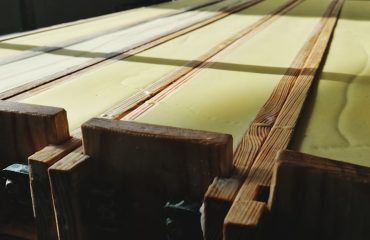The construction industry is undergoing a significant transformation, driven by the need for sustainable, efficient, and cost-effective building solutions. Hybrid construction, a revolutionary approach combining traditional and modern building methods and materials, is at the forefront of this change. This comprehensive guide explores the multifaceted world of hybrid construction, delving into its various aspects and showcasing its potential to reshape the future of building.
Understanding the Essence of Hybrid Construction
Hybrid construction, in its simplest form, involves integrating different construction materials and techniques within a single structure. This isn’t merely about using a mix of materials; it’s about strategically combining their unique properties to optimize performance, reduce costs, and enhance sustainability. For instance, a project might use a steel frame for structural support, concrete for load-bearing walls, and timber for interior finishes. This strategic combination leverages the strengths of each material, mitigating their weaknesses. The result is a building that is stronger, more durable, and often more environmentally friendly than one built using a single material approach.
Popular Hybrid Construction Methods: A Closer Look
Several hybrid construction methods are gaining popularity. One prominent example is the combination of steel and concrete. Steel frames offer exceptional strength and flexibility, allowing for taller and more complex structures. Concrete, on the other hand, provides fire resistance, durability, and thermal mass. This combination is frequently seen in high-rise buildings and infrastructure projects. Another common approach is the integration of timber and concrete. Timber’s lightweight nature and ease of construction make it ideal for framing and cladding, while concrete provides the necessary structural integrity and fire protection. This method is particularly suited for residential and commercial buildings seeking a balance between sustainability and structural performance. Furthermore, the use of prefabricated modular components, often made from a combination of materials, is rapidly gaining traction. These modules are built off-site and transported to the construction site, significantly reducing construction time and costs.
Material Combinations: Exploring the Synergies
The success of hybrid construction hinges on selecting the right material combinations. The choice depends on various factors, including the building’s intended use, budget, site conditions, and environmental considerations. Common material pairings include:
- Steel and Concrete: Offers high strength, fire resistance, and durability.
- Timber and Concrete: Combines sustainability, lightweight construction, and structural integrity.
- Steel and Timber: Provides a balance of strength, flexibility, and sustainable material use.
- Concrete and Masonry: Offers robust structural performance and aesthetic versatility.
- Bamboo and Concrete: A rapidly growing sustainable approach, leveraging bamboo’s strength and rapid growth.
Careful consideration of material compatibility, thermal performance, and long-term maintenance is crucial when selecting these combinations.
Sustainability and Environmental Impact: A Green Approach
Hybrid construction offers significant advantages in terms of sustainability. By utilizing a mix of materials, it’s possible to reduce the overall environmental footprint of a building. For instance, incorporating timber reduces reliance on energy-intensive materials like steel and concrete. Furthermore, the use of prefabricated components minimizes waste on-site and improves construction efficiency. The selection of recycled or sustainably sourced materials further enhances the environmental benefits. Hybrid construction methods also allow for optimized energy performance, reducing operational costs and carbon emissions throughout the building’s lifecycle. Strategies such as improved insulation and the incorporation of renewable energy systems can be seamlessly integrated into hybrid designs.
Future Trends in Hybrid Construction
The future of hybrid construction is bright, with several exciting trends emerging. The increasing adoption of Building Information Modeling (BIM) is streamlining the design and construction process, allowing for better material coordination and optimization. The development of innovative composite materials, such as self-healing concrete and high-performance timber, is further enhancing the capabilities of hybrid structures. Furthermore, advancements in 3D printing and robotics are automating certain aspects of construction, improving efficiency and reducing labor costs. The integration of smart technologies, such as sensors and IoT devices, is also becoming more common, allowing for real-time monitoring and optimization of building performance. Ultimately, the future of hybrid construction lies in its ability to create more sustainable, resilient, and efficient buildings that meet the evolving needs of society.
Tags: Hybrid Construction, Sustainable Building, Construction Techniques, Green Building Materials, Building Innovation




